Meet the Loon Copter from Oakland University – a drone that can fly, float and even dive down to check stuff out underwater. It flies like any other conventional quadcopter and floats upon coming in contact with water. Afterwards, it is capable of either staying at one spot or making use of it’s props for moving around on the surface. It is also capable of pumping water into the buoyancy chamber, thus causing it to sink.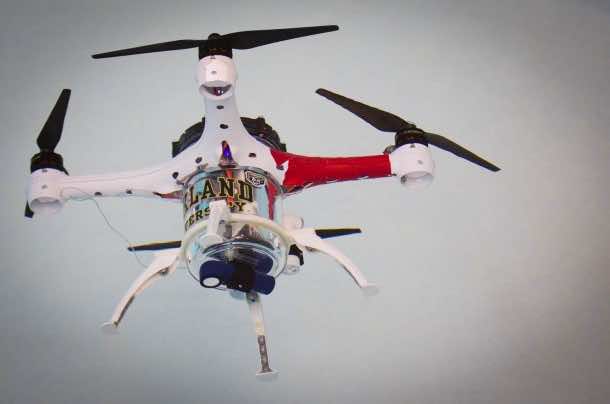
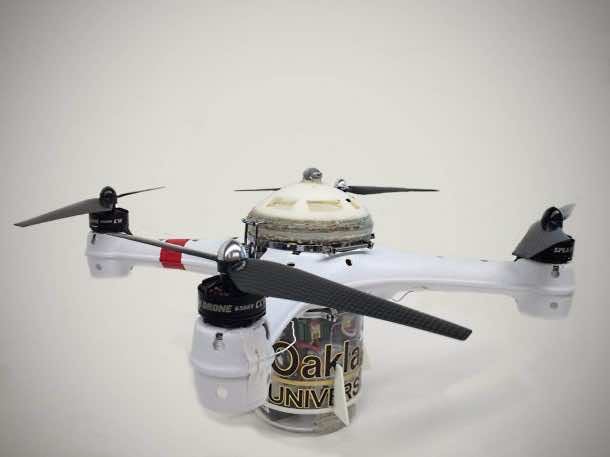
The Loon doesn’t submerge straight down however, rather it tips to one side while it sinks. It can re-engage its props letting them to pull it top-first through water. The drone is capable of turning to either side, ascend or dive by making use of water ballast system and can record videos or gather other data during its flight. It simply empties the buoyancy chamber when it has to be airborne again and returns to the surface to take off or simple float.
It is currently in prototype form and has a limited remote control range underwater (a few meters). The video can’t be transmitted as well and is recorded onboard to be viewed later. The team is working on changing this in the future though.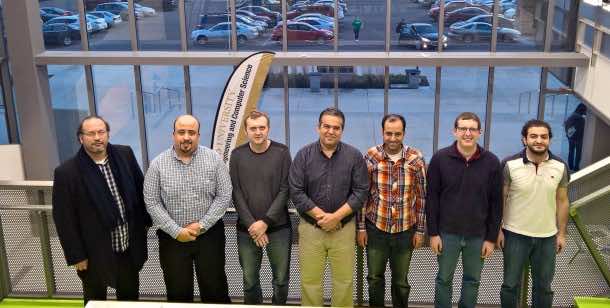
Dr. Osamah Rawashdeh, lead scientist said, “We are looking into acoustic modems, repeater buoys, and some other techniques that could allow streaming of live video for operator feedback as well as data and control commands. For open-water applications, we can have the vehicle dive at predefined GPS points to various depths autonomously and follow some pre-programmed movement patters underwater to collect data or video footage.”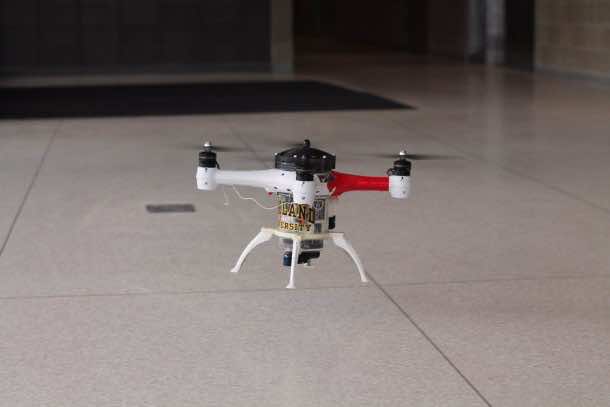
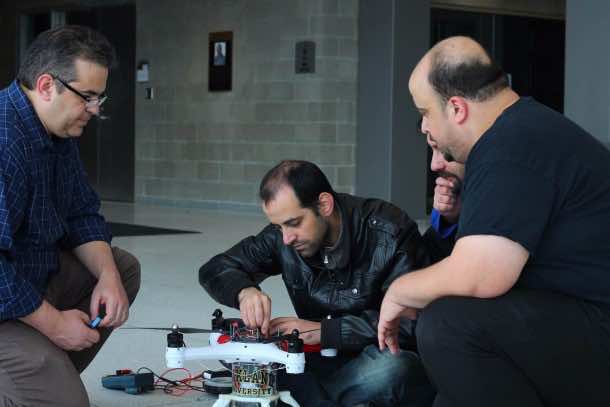
The possible applications of this drone as per Rawashdeh include search and rescue operations, underwater pipeline inspections, tracking of oil spills at different depths, bridge foundation inspections and marine life studies. Further suggested uses also include Loon spotting sharks from air subsequently landing in the water and making use of a deterrent system for chasing them away from any nearby swimmers.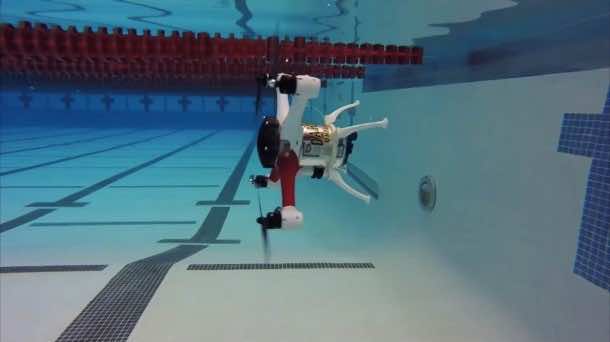
Rawashdeh further added, “The Loon Copter can loiter on the surface of the water without energy usage. It can also change and control depth with little power (no propeller use). Not having to use propellers to change depth or resurface also has an advantage when obstacles (e.g: structures or vegetation) are close to the drone. We can resurface without hitting any obstacles.”
Dr. Rawashdeh along with his team will be in Dubai in February where Loon shall be participating as one of the 10 finalists in the competition known as Drones for Good competition.


